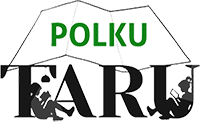Multilingual literature education
Literature plays an important role in the education of second language learners and in monolingual settings. The importance of reading and literacy skills in the development of a child’s academic skills, emotions, or coping mechanisms is undeniable (Aerila & Merisuo-Storm, 2017; Allington & Gabriel, 2012). Recent studies emphasize the importance of implementing children’s literature in multilingual classrooms from an early age and indicate that children’s literature can be very effective in acquiring a second language for students of all ages (Aerila & Kokkola, 2015; Chen, 2014).
Multilingual classrooms should have literature in both the school’s and student’s own language. Native language literacy and second language development/learning are interrelated (Murray, 2007). Studies (Chen, 2014) explicitly state how the degree of children’s native language proficiency becomes the strongest predictor for their second language development. Further indications show that children’s native language builds a knowledge, concept, and skills base that transfers from reading in the native language to the second language. Moreover, a students’ second language development is predicted and affected by not only their native language competence but also the level of the second language input, which is expected to be at least one-step beyond the student’s current level of linguistic competence (Chen, 2014). Note that when lessons include language-learning objectives, various activities with texts make learning more effective. Learning tasks should contain reading, listening, and viewing materials both in large and small groups and in pairs (Aerila & Kauppinen, 2019).
In multicultural settings, fiction can provide information about different cultures, communication methods, and topics of interest to certain age groups. Children read books mainly for information: A preschooler is interested in books about starting school and a teenager about dating and different professions. An immigrant might read a book to get familiar with the ways of talking and behaving at school (Appleyard, 1998, Sarmavuori & Aerila, 2010). For second language learners, learning the language also means learning the culture; this includes the cultural features of certain areas, nations, and communities and identity work of language learners because language is an essential part of one’s identity and personhood (Li, 2013).
For immigrant families, language may create cultural conflicts at home: children generally learn a second language at school faster than the parents or grandparents and start using it at home. This cultural crash is one of the main reasons for immigrant students’ identity crisis and psychosocial stress. Therefore, teachers should consider the heritage cultures at school. This means offering literature other than that in the mainstream language and evaluating the literature used at school from the perspective of the students’ cultures to help them recognize the value of their own cultural heritage (Li, 2013). For second language learners, texts with the target and heritage languages can be used for language learning. Using literature often and in various ways can enhance students’ literacy skills. Students learn various means of meaning making through factual and, particularly, through fictional texts containing metaphorical language. Literature can also support understanding various registers of language. This knowledge about texts and language use develops language awareness, which forms the base of language skills. Using various activities in literature classrooms enhances creativity in composing strategies for interpreting and producing texts. The meta-level skills of language learning are important, while the advanced language skills are the target.
Practices related to communities of readers are beneficial for multilingual readers because reading facilitates identity exploration (Hempel-Johansen & Cremin, 2018). Children who enjoy reading and are intrinsically motivated to read actually read more; this increases their proficiency and vice versa (Morgan & Fuchs, 2007; OECD, 2010). In communities of readers, multilingual students can exploit the literature and reading materials for identity affirming. According to Ntelioglou, Fannin, Montanera, and Cummins (2014), multilingual students’ agency is vital for their literacy achievement. Their engagement (literacy engagement framework) is approached by scaffolding meaning, connecting to students lives, affirming student identities, and extending students awareness and command of academic language across the curriculum. They highlight the importance of sharing identity texts as a part of the literary engagement. Identity texts are multimodal texts (written, spoken, visual, signed, musical, dramatic, or combination) used to illustrate the identities, cultures, languages, and experiences of multilingual students.

